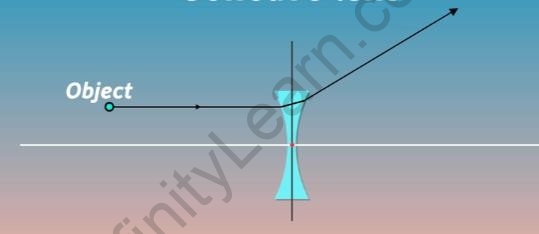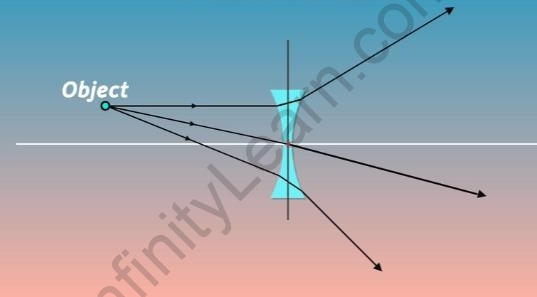Table of Contents
Table of Contents
- Refraction of Light by a Concave Lens
- Image of an Object in front of a Convex Lens
- Summary
- What’s Next?
In the previous segment, we learnt about the Refraction of light by a convex lens. In this segment, let us learn about the refraction of light by a concave lens.
How is light refracted by a concave lens?
- Consider a concave lens on which a ray of light is incident from a point object.

Object in front of a concave lens
- Once the ray of light enters the concave lens, its speed will change and hence it undergoes refraction. The medium surrounding the concave lens is considered to be air. So, the refracted ray will bend towards the normal as the ray of light is entering from an optically rarer medium to an optically denser medium and its speed will decrease.
- When this refracted ray reaches the other spherical surface of the lens, it will undergo refraction while leaving the lens. The light is travelling from an optically denser medium to an optically rarer medium. So, its speed increases and the ray of light bends away from the normal.

Refraction of a ray of light through a concave lens
- Similarly, many rays will emerge from the point object which will be refracted by the lens as shown below:

Refraction from a point object in a concave lens
- All the refracted rays propagate away from each other. However, these rays can be traced back to form a virtual image.






